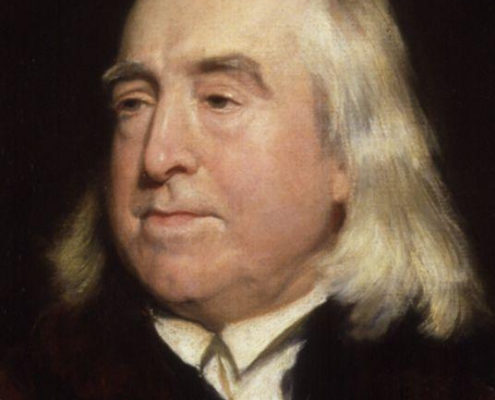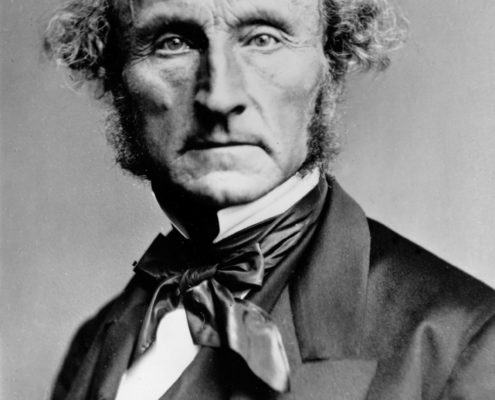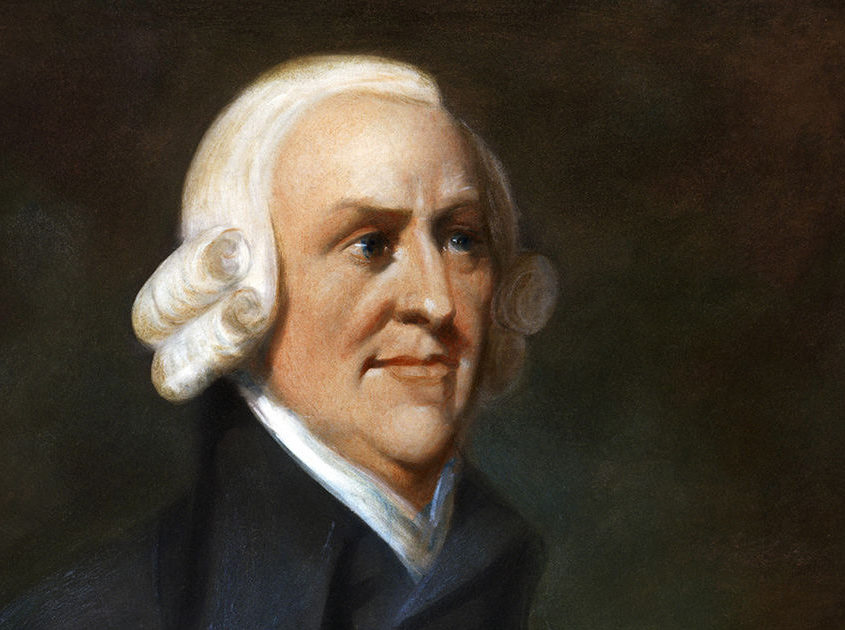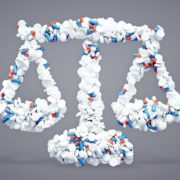 Ethical Theories
Ethical Theories 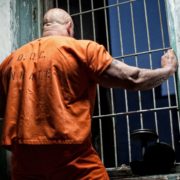 Minority Groups and Drug Laws
Minority Groups and Drug Laws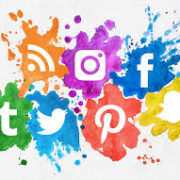 Social Media and EthicsTreatment and Education Ethics
Social Media and EthicsTreatment and Education EthicsEthical Theories and Perspectives
This page defines several ethical theories and how they would positively or negatively impact legalization of drugs.
Utilitarian perspective
The Utilitarian perspective which was founded by Jeremy Bentham and later modified by John Stuart Mill, is an ethical theory that does not solely focus on an action as right or wrong but instead how pleasurable consequences of these actions are(Driver, 2014). .Jeremy Bentham believed that every action “should be directed by the principle of utility, defined as the principle that approves or disapproves of every action according to the tendency it appears to have to increase or lessen the happiness the individuals whose interest is in question” (Coulson, 2017).Jeremy also established an algorithm know as the Felicific calculus, which calculates the sum of pleasures in comparison to the amount of pain to view the value of its consequences saying that the value for each person would be based on “intensity”, “duration”, “certainty or uncertainty”, its “propinquity or remoteness, “fecundity”, and “purity”(Crimmins, 2019). John Stuart Mill established the notion of lower and higher pleasure, says that some pleasures are less important than others.
Pros:This perspectives belief is the most ethical choice is the one that produces the most amount of pleasure for the greatest amount of individuals. In this perspective actions that make you happy for a short time i.e drugs would be considered not as good or bad in comparison to things that leave a lasting impact.
Example: Due to the risk of death, addiction, and illness when using drugs the Utilitarian perspective would consider drugs as morally wrong, it does not produce the greatest amount of good for the majority.
Cons: You may never know what produces the greatest amount of good for the majority because the future is not known.This perspective also does not take into account Justice and individual rights.
Example: Due to inclusiveness of the Utilitarian perspective, individual happiness is overlooked. Drugs may make many individuals happy but they are not the majority therefore their opinions are overlooked.
Legalization under Utilitarian perspective- Though drugs aid the sick, thousands of individuals abuse prescription and non prescription drugs everyday (source). Due to the negative consequences that surround drug use such as addiction, violence, illness, and death under the Utilitarian perspective drugs would be considered illegal.

Deontological Perspective
The Deontological Perspective founded by Immanuel Kant is a normative theory that believes choices may not justify their outcomes, each individual should follow certain rules that help establish what is right or wrong. In this perspective individuals make choices by following the moral norm.The well known slogan from this perspective is “The right is independent of the good” (encyclopedia, 2020). Immanuel Kant believed that moral laws were a categorical imperative in which the supreme categorical imperative is “Act only on that maxim through which you can at the same time will that it should become a universal law” (The Editors of Encyclopaedia Britannica, 2019).
Pros:Unlike Utilitarianism Deontological perspective does not focus on the outcome, though outcomes may be positive, the actions can still be morally forbidden. This perspective creates a code of conduct for Individuals, where “where any action would have the capability of becoming a universal law because of its goodness” (Regoli, 2019).
Example: Taking drugs may helps relieve stress, makes users feel happy and relaxed. Though this outcome may seem morally correct the action of using illegal drugs is morally forbidden in this perspective.
Cons: Due to the idea that each individual should follow the same set of rules, there are instances where the welfare of the majority is forbidden.
Example: Under this perspective drugs like narcane would not be assessable to drug users and would cause hundreds of deaths each year.
Legalization Under Deontological Perspective drugs would be forbidden because it goes against the “norm” and rules of what is right and wrong.
Libertarianism
Libertarianism was developed from the works of various European philosophers such as John Locke, Adam Smith, and Thomas Jefferson (Boaz, 2020). This way of thinking is the belief that we have natural rights as human beings that are separate from the government, believing in Life, liberty and the pursuit of happiness, or the “good life”and that all individuals should be politically free and autonomous (van der Vossen, 2019).Adam smiths well know contribution to libertarianism is the development of spontaneous order, which suggest that order should arise spontaneously, individuals should be free to interact with eachother, protect each others rights and as that occurs order will also be placed without central direction.(David Boaz Facebook Twitter, 1997)
Pros: Libertarianism gives each individuals the ability to make their own choices. Individuals have the right to live their life any way they please.
Example: Under the Libertarian perspective individuals may use drugs as often as they choose due to the belief that each individual has God given rights (Boaz, 2020) that allow them to do whatever makes them happy.
Cons: Due to the fact that each individuals have chosen what is morally right and wrong there are no guidelines or structure. In this perspective the government has limited power, in which they should can protect the rights and freedom of all mankind (Boaz, 2020)
Example: In this perspective individuals may use drugs as frequently as they like, though there may be health and societal consequences they are not taken into account because the individual rights are the basis of Libertarianism.
Legalization Under Libertarian perspective- Under the Libertarian perspective all drugs would be legalized. Due the idea that each individual has the their right to be happy and free, if drugs make you happy than drugs are morally accepted.
Conclusion
Throughout history there have been several differing perspectives on how morality can be gauged. Today we can utilize those exact same theories in conjunction with the use of licit and illicit drugs. In our society today we follow more of a Utilitarian perspective. Due to the idea that the consequences are the basis of whether and action is morally correct or wrong to the violence, crime and death that surrounds drugs, they are illegal and seen as having consequences that negatively impact our society. We have laws that punish individuals which are government consequences and due to the fact that drugs impact their day to day life which are physical and societal consequences. The other two theories describes above would not work well with the society we have today, deontology for instance would call for everyone to follow specific guidelines which would cause rebellion, and Libertarianism would give individuals freedom with very little structure.
- The Editors of Encyclopaedia Britannica. (2019, March 8). Deontological ethics. Retrieved April 20, 2020, from https://www.britannica.com/topic/deontological-ethics
- Regoli, N. (2019, January 14). 12 Pros and Cons of Deontological Ethics. Retrieved from https://connectusfund.org/12-pros-and-cons-of-deontological-ethics
- Boaz, D. (2020, February 28). Libertarianism. Retrieved April 20, 2020, from https://www.britannica.com/topic/libertarianism-politics
- van der Vossen, B. (2019, January 28). Libertarianism. Retrieved April 20, 2020, from https://plato.stanford.edu/entries/libertarianism/
- Driver, J. (2014, September 22). The History of Utilitarianism. Retrieved April 20, 2020, from https://plato.stanford.edu/entries/utilitarianism-history/
- Coulson, J. (2017, October 11). A Brief History of Utilitarianism. Retrieved April 21, 2020, from https://gohighbrow.com/a-brief-history-of-utilitarianism/
- Crimmins, J. E. (2019, January 28). Jeremy Bentham. Retrieved April 21, 2020, from https://plato.stanford.edu/entries/bentham/#FelCal
- The Editors of Encyclopaedia Britannica. (2019, March 8). Deontological ethics. Retrieved April 21, 2020, from https://www.britannica.com/topic/deontological-ethics
- Deontology. (2020, April 19). Retrieved April 21, 2020, from https://www.encyclopedia.com/medicine/divisions-diagnostics-and-procedures/medicine/deontology
- David Boaz Facebook Twitter. (1997, January 15). A History of Libertarianism. Retrieved April 21, 2020, from https://www.libertarianism.org/publications/essays/history-libertarianism

How are Minorities Affected by Drug Use?
In cases of addiction and recreational drug use, lower income Americans are much more susceptible to substance abuse due to the factors that touch their lives much more often than those in the middle and upper class. While addiction is a disease that effects people from all walks of life, it is unfortunately a reality amongst lower income individuals living in impoverished areas. In addition to this, non-addictive drug use is something that happens amongst all types of communities but is stigmatized amongst poor Americans in particular. Taking these two things into account and assuming that they are true, it is important that society and law enforcement ethically think about the factors that may have driven low-income people into substance abuse more than a middle- or upper-class counterpart. First, is that financial insecurity increases stress and feelings of hopelessness and low self-esteem, as many people worry about how to afford shelter, food, and other basic necessities. When people struggle with how to make ends meet, they often turn to drugs and alcohol to temporarily escape. Lack of social support or healthcare for people struggling with chronic diseases or mental illness may also be a factor. Without healthcare or friends, family, and resources in order to get help or treat any medical conditions, many people are forced into self-medicating to cope with their situation and reach some sort of normalcy. They are not offered the same social services and support in order to keep themselves going. Additionally, many people turn to selling drugs in order to keep themselves and their families afloat. They have no other foreseeable choice for how to make enough money quickly to support their families. In low-income area’s drug dealing may be the easiest decision. When sentencing low income people for their substance abuse related crime, it is important to take a more libertarian view of the situation. These people had the right to make their own choices about substance abuse and those choices should be examined carefully to make a sound decision on whether treatment or jail time is a better option.
It is no secret that nationwide, different lower-income and ethnic communities bear the weight of racial disparities when it comes to drug law enforcement. African American and Hispanic groups are hit the hardest and the impact spans beyond just certain states and cities. While the implications may vary from time to time in each region, the core problem stays the same. These communities face higher arrest and incarceration rates and the arrests are not always a reflection of increased prevalence of drug use amongst minority groups, but instead a sign of US law enforcements focusing on urban and lower income areas, and communities of color. There are also many disparities for arrests and incarceration in terms of illegal drug possession and low-level sales. Many dealers who are selling small amounts of drugs to support their own substance abuse habits will go to jail for decades. These prison sentences don’t take addiction into account.
Stigmas Around Minorities and Drugs
When most people picture a frequent substance abuser, an addict in particular, they picture a poor, unemployed, and uneducated person from a lower income area. There is a bias around people of this economic level as they are assumed to be “lazy” and somehow physically correlated to addiction. However, this is not the case at all. In fact, there is no proven correlation with being poor and becoming addicted. While there are factors that may lead to substance abuse, there is no proven scientific or psychological link between the two. In fact, according to the Sunrise House, “approximately 78 percent of individuals with an income of $75,000 or more reported that they drink [alcohol], compared with 45 percent of individuals with an income of $30,000 or less.” This statistic goes to show that in terms of substance abuse, wealthier or middle-class individuals use drugs and alcohol in comparison to those of lower economic status. They are more likely to use and abuse addictive substances overall. This disproves the bias that poor people automatically use substances and become addicted purely based upon the idea that they are poor. Poverty does not equal addiction.
A common misconception around minority groups, looking at racial groups in particular, is that they use drugs on average much more than the white population of America does. This particular idea is perpetuated often in our current society as minorities, specifically African American men are arrested at a much higher rate than their white counterparts. However, this stereotype largely rings untrue as “estimates for recent illegal drug use are roughly equivalent for non-Hispanic African Americans and Whites: slightly more than 6 percent of these population members qualify as active and current illegal drug users” (National Institute on Drug Abuse 22). This statistic goes to show that contrary to popular belief, African American current drug users don’t use drugs more than white people do, but instead equally as much. Most importantly, another study conducted by the Hamilton Project shows that slightly more than 16% of the total African American population has used some sort of drug in the past, while more than 18% of the White American population has used drugs before. The statistical findings show that minorities don’t, in fact, use drugs more than the white majority. The stigma around this group of people is largely perpetuated by the fact that they are arrested for drug related crimes more frequently than their white counterparts, therefore giving off the false impression that Blacks must be using drugs more to land them in jail.
Another common misconception around Black Americans is that they sell drugs at a much higher rate than their non-black counterparts. This common misconception is also fed by the idea that African Americans (men in particular) are arrested for drug related crimes at a much higher rate than whites are. Based on a study conducted by the Hamilton project, data shows that both black and white people sell drugs at a similar rate at around 1.5% of the total population of each race. However, Black Americans are 2.7 times more likely to be arrested for drug related offenses. The shocking truth about this current situation is that minorities are getting the bad rap for the same actions they take as white people. While the buying, selling, and using of drugs is illegal in the Unites States and breaking such laws are met with the corresponding legal punishment, it bears the question: Is it ethical for minority groups to bear the stigma of being “addicts” or “dealers” or more “criminal” than the white majority?

Discriminatory Law Enforcement Practices
As of 2013, 80% of people in federal prison and nearly 60% of people in state prison who are in jail for drug offenses are Black or Latino. Yet studies show that people of color are not any more likely to use drugs than white people are. “Research shows that prosecutors are twice as likely to pursue a mandatory minimum sentence for black people as for white people charged with the same offense. Among people who received a mandatory minimum sentence in 2011, 38% were Latino and 31% were Black” (Drug Policy Alliance). There is a huge disparity between those who are arrested and charged for drug related crimes in comparison to the fact that there is no difference in how much Black and Latino people use drugs over the majority. The statistics are shocking yet head scratching. Why is it that minorities are being placed in more often jail for the same crimes? It is reported that currently, the federal government has programs set up in order to encourage local and state police departments to crack down on drugs. The programs include rewards such as money grants to local police departments who show promising headway with cracking down on drug use. Some federal grants, for example, once required police to make more drug arrests in order to obtain more government funding towards anti-drug movements. In sum, in order to obtain this money, they were encouraged to essentially “catch” more abusers read handed. Minority groups (particularly those in low income areas) are quoted as an easy target for police departments. This is because they tend to sell in open-air markets, such as public street corners, and have less political and financial power than white Americans. Therefore, minorities are unfairly punished more often. Due to the fact that minority groups in low income areas have no money for lawyers or treatment, they are easy arrests because they can’t afford to put up any fight. They are racially and economically profiled by police so they can get more money to make more arrests and continue the cycle. Police departments felt as if it was too difficult to arrest a white kid with the same crime as they could pay to fight back.
In a side by side comparison with certain drugs, the sentences are also harsher. Trafficking crack cocaine, a drug more popular amongst Black Americans, carries the harshest punishment. The threshold for a five-year mandatory minimum sentence of crack is 28 grams whereas the threshold for powder cocaine, which is more popular amongst white Americans and has a similar composition to crack is 500 grams. The two drugs are very similar to each other, but one holds a harsher sentence as it is most commonly associated with Black people.
Quick Facts on Law Enforcement Disparities:
- “Drug sentences for black men were 13.1 percent longer than drug sentences for white men between 2007 and 2009, according to a 2012 report from the US Sentencing Commission” (Vox).
- “A 2015 report by Human Rights Watch found that deportations for drug possession offenses increased by 43% from 2007 to 2012” (Drug Policy Alliance).
- “Simple marijuana possession was the fourth most common cause of deportation for any offense in 2013, and the most common cause of deportation for drug law violations. More than 13,000 people were deported in 2012 and 2013 just for marijuana possession” (Drug Policy Alliance).
Is All This Ethical?
Why is addiction and recreational drug use so often correlated with lower income communities? The unfortunate reality is that they are more susceptible to turning to drugs as a part of the outside factors that come with living below the poverty line. When we so quickly judge a person for using a particular substance, we do not ethically think about how to treat that user. When arresting and sentencing those caught with drugs, is it ethical to take into account the factors that may have brought them to that point? In many low-level arrests, treatment is the much more humane approach to breaking the cycle of drug use in our nation. Should people have the libertarian right to take drugs should they choose? Or is it morally wrong to take them despite the background story?
It is also important to examine our current law enforcement system and its discriminatory practices. Many minorities, particularly Blacks and Latinos are being incarcerated at much higher rates than their white counterparts simply because the justice system sets them up to fail. They are targeted and falsely charged with long prison sentences for small low stakes activities. In our justice system, we should evaluate how we treat different groups in our country over the same crime. While it is important to note that drug use is illegal (alcohol use is not), and should be dealt with accordingly, we must take into account if we are dealing with every drug user equally. Treatment options instead of incarceration might be a more effective solution to “winning” the war on drugs. It should not be ethical for federal governments to award local governments for making more arrests, even if those arrests are petty and discriminatory. As a country, we don’t ethically think about our community as a whole, but instead the white majority. In what other instance is it ethical to punish one group more than another for the same crime? It is unethical to create racial and socio-economic disparities with drug use and not offer the same resources for every US inhabitant. For the future, we must spend more time looking at how we unethically treat minorities despite them having the same libertarian right to take drugs as whites and the middle and upper classes. We cannot take a strong demonological approach with one group and not another.
Sources:
“Race and the Drug War.” Drug Policy Alliance, Drug Policy Alliance, www.drugpolicy.org/issues/race-and-drug-war.
Lopez. “The War on Drugs, Explained.” Vox, Vox Media, 8 May 2016, www.vox.com/2016/5/8/18089368/war-on-drugs-marijuana-cocaine-heroin-meth.
National Institute on Drug Abuse. “Drug Use Amongst Racial/Ethnic Minorities.” National Institute on Drug Abuse, NIH, Sept. 2013, archives.drugabuse.gov/sites/default/files/minorities03_1.pdf.
“Rates of Drug Use and Sales, by Race; Rates of Drug Related Criminal Justice Measures, by Race.” Rates of Drug Use and Sales, by Race; Rates of Drug Related Criminal Justice Measures, by Race | The Hamilton Project, Bookings, 26 Mar. 2020, www.hamiltonproject.org/charts/rates_of_drug_use_and_sales_by_race_rates_of_drug_related_criminal_justice.
“Poverty and Addiction Relationship.” St. Joseph Institute for Addiction, 11 Sept. 2019, stjosephinstitute.com/understanding-the-relationship-between-poverty-and-addiction/.
“Addiction among Socioeconomic Groups.” Sunrise House, American Addiction Centers, sunrisehouse.com/addiction-demographics/socioeconomic-groups/.
Fellner, Jamie. “Race, Drugs, and Law Enforcement in the United States.” Human Rights Watch, Human Rights Watch, 14 July 2010, www.hrw.org/news/2009/06/19/race-drugs-and-law-enforcement-united-states.
What does social media’s impact on the ethics of drug use look like?
Drug use is something that has been questioned and battled for ages; the legalization, medical use and even recreational use. Are all of these uses ethically correct? Are they going to happen anyways? Utilitarianism is defined as actions that are morally correct if they are beneficial to the majority of others.
Drugs can be argued to benefit society as a whole and can also be argued to do nothing for our society. It can benefit individuals in ways that others may not see, which is then contributing to the overall society; but it can also do the opposite.
Social media is a whole new factor that is brought into the question. There is no correct answer to if drug use is ethically correct or not, but there are ways to make it safer and more advanced from what it was before. Social media has done a new job that we have not seen yet. Most platforms offer easy accessibility to drug dealers and substances (I.E. Instagram, Twitter, Snapchat and Facebook), this does not mean that it is safe though. More recently, there have been apps created to promote a more wholesome and safe use of drugs. The substances come with test kits and the sale is completely transparent to the community, making it social rather than secretive.
Again, there is no correct answer on wether drug use and outside influences such as social media are ethically correct, but they are growing and there is more than one side to the argument.

Promotion of drug use through social media:
Social media allows kids of any age to become susceptible to things that famous individuals are doing such as the consumption of drugs and alcohol. Individuals like Justin Bieber and Cardi B advertise their drug use on platforms such as Instagram, Snapchat and even twitter. When adolescents and even older individuals are seeing this, it can either spark a curiosity or encouragement to try it themselves.
A survey that was conducted revealed that 70% of individuals that use drugs also participate on a form of social media. Compared to non-users, the surveyed group were 5x more likely to buy cigarettes, 3x more likely to drink, and 2x more likely to use marijauna. “Recent studies show that 75% of teenagers seeing photos on social networking sites of other young people smoking weed or drinking alcohol encourages them to experiment in the same way.” Social media also has a way of affecting mental health which then results in individuals finding ways to cope with these problems (I.E. Drugs and alcohol).
There is a promotion through different platforms, which then impacts the choices people are making in the consumption of drugs, drastically. They don’t see the negatives of it, because they have only seen it advertised in a fun way and even promoted by famous individuals.
How drug consumption is perceived through social media:
Drugs and alcohol are perceived in a positive and even inspirational light on social media nowadays, compared to before when those things were forbidden and always had a negative light shed on them. Social media also promotes the idea of buying and selling. It is said that these platforms make it easier for individuals to keep in touch with dealers and sources for drug consumption.
One main underlying issue is that social media perceives most individuals lives one way, when they can be the total opposite. This plays into the image that drugs can be desirable even though they are not. This promotion is not a good thing because the whole truth is not revealed through these platforms.
“Social media doesn’t just pressure teens to use substances, it provides a platform for online drug dealers. In some cases, this may mean social media drug dealing, in which a person connects with someone they know, or a stranger, to set up a drug deal. In other cases, it may mean teens buying drugs online, often through social media. ”
Why its easier to access drugs (in a safer manner):
Apps are made now to allow easier and safer access to drugs at concerts or even just in one’s own home town. The app called Radiate is an example of these. This app is disguised as a ticket selling/group finding app. In reality, it is used to sell drugs that have been tested and/or test kits to use before seeing a show.
Individuals will also post saying that they are in need of a group to do or try drugs with. This applies for shows and for individuals in the area (after setting your zip code and future concerts). This ensures that almost all of the drugs are safe, and others witness the selling and purchasing of each substance.
On the other side of this, Individuals may feel the pressure to get involved in one of these apps since they are so easily accessible and widely used at music festivals. Then this results in individuals doing drugs that may not have before. In the end, it is the better alternative to participating in an “under the table” drug deal. It is always the safer option, just not always the best option.

How does social media morally effect individuals ethics on drug use?
Social Media makes it easier for individuals to access any sort of substance and quite frankly, is very encouraging. There is a good and bad side to this; since individuals are already encouraged to try drugs from outside influences, apps like radiate are a great way to do it. They come with test kits and even offer a community to assist in the activity.
On the other hand, these social platforms open up an entire new thought and motive to individuals who have never tired them before wether that be someone who is curious and looking or someone who is struggling with a mental illness.
In result, it is hard to say wether or not social media makes drug use more utilitarian to society or not; there are two sides on the issue, its just wether not one supports drug use and to what extent. Social media makes it much easier to access, purchase, and become influenced by drugs. It does not make it ethically correct, but could result in a safer future of drug use. Apps like radiate are promising for the future because of the low risk factor and publicity. It is not secretive and even promotes access to safe drugs use with testing kits.
Social Media will undoubtably provide individuals with the information to choose if they would like to participate and use, and on what platform at that. But social media also provides individuals with the capabilities on why and how not to use; this is up to each and every persons ability to become educated and decide based off of personal wants, needs, and judgement.
- Social media can influence teens with pro-drug messages. (2014, July 1). Retrieved from https://archives.drugabuse.gov/news-events/news-releases/2014/07/social-media-can-influence-teens-pro-drug-messages
- Staff, E. by E. (n.d.). Guide to Drugs on Social Media. Retrieved from https://americanaddictioncenters.org/drugs-on-social-media\
- The Influence of Social Media on Teen Drug Use. (2019, October 16). Retrieved from https://www.addictioncenter.com/community/social-media-teen-drug-use/
- Tom, M., & Butler, P. (n.d.). Radiate. Retrieved from https://www.radiatetheworld.com/
- Why Social Media Could Be Contributing To Drug and Alcohol Abuse Among Teens. (2019, November 4). Retrieved from https://oceanrecoverycentre.com/2019/08/social-media-drug-and-alcohol-abuse/

